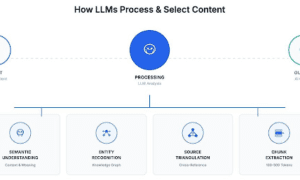Airports, as bustling hubs of global movement, generate vast amounts of data every day. From passenger information, flight schedules, baggage details to security protocols, the data generated is immense. Leveraging this data through Big Data Analytics can revolutionise the way airports operate and enhance the passenger experience.
The Potential of Big Data in Airports
Improving Operational Efficiency:
Optimise Flight Schedules: Historical data analysis can identify the most efficient flight paths and schedules, reducing fuel consumption, emissions, and improving on-time arrival rates.
Improve Baggage Handling: Real-time baggage tracking can pinpoint bottlenecks in the baggage handling system, reducing delays and enhancing system efficiency.
Reduce Congestion at Security Checkpoints: Analysing passenger traffic data can predict congestion points, allowing for effective staff deployment and optimization of security checkpoint layouts.
Enhancing the Passenger Experience:
Personalise the Passenger Journey: Data on passenger preferences can be used to tailor the passenger journey, from recommending amenities and services to sending real-time flight status updates.
Real-time Flight Status Updates: Tracking flight statuses in real time ensures passengers receive accurate and timely information, reducing travel-related stress.
Recommend Amenities and Services: Analysing passenger data can suggest amenities and services that cater to individual passenger interests, including restaurants, shops, or activities.
Enhancing Security:
Identify Potential Security Threats: Analysing passenger behaviour data can highlight potential security threats, such as passengers carrying prohibited items or exhibiting suspicious behaviour.
Track Suspicious Activity: Monitoring CCTV footage and other data sources in real time can help detect and address potential threats swiftly.
Improve the Screening Process: Data from past screenings can refine the screening process, identifying inefficiencies and suggesting areas of improvement.
Reducing Costs:
Optimise Energy Usage: Data on energy consumption can spotlight areas for energy reduction, from optimising lighting systems to enhancing building insulation.
Improve Maintenance Scheduling: Data on equipment condition can refine maintenance schedules, reducing breakdowns and enhancing the reliability of airport infrastructure.
Reduce Waste: Waste disposal data can highlight areas for waste reduction, from improving recycling practices to finding ways to reuse materials.
Some of the most trending Big Data Analytics Tools
Apache Hadoop: A distributed file system designed for storing and processing vast amounts of data. Its strengths are scalability and fault tolerance.
Apache Spark: A fast, general-purpose cluster computing system suitable for both batch and real-time processing. Spark is renowned for its speed and flexibility.
Microsoft Azure Databricks: A cloud-based platform optimised for Apache Spark applications. It’s the go-to for businesses aiming for a quick start in big data analytics.
Amazon Web Services (AWS) Elastic MapReduce (EMR): A managed service for Hadoop and Spark, ideal for businesses already integrated with AWS and looking to delve into big data analytics.
Google Cloud Platform (GCP) BigQuery: A serverless, highly scalable cloud data warehouse, designed for businesses that prioritise efficient data storage and analysis without the infrastructure overhead.
IBM Cloud Pak for Data: A unified platform offering a plethora of big data analytics tools and services. It’s a comprehensive solution for businesses diving into big data.
SAP HANA: An in-memory database tailored for both operational and analytical workloads. SAP Analytics Cloud is the top choice for businesses that require real-time data processing.
Oracle Big Data Cloud Service: A cloud platform enriched with Oracle’s big data technologies, making it a prime choice for businesses already familiar with the Oracle ecosystem.
Pentaho Data Integration: A robust data integration platform adept at extracting, transforming, and loading data from a myriad of sources. For businesses that need to amalgamate data from various origins for big data analytics, Pentaho stands out. Moreover, for those seeking to maximise the potential of this tool, considering expert services like Pentaho Consulting can be a valuable step.
The Future of Big Data in Airports
The amount of data generated by airports is projected to soar to 100 zettabytes by 2025, equivalent to 100 trillion terabytes or 100 billion gigabytes. This staggering growth is not just a testament to the increasing digitization of the aviation industry but also an indicator of the potential of big data in transforming airport operations.
Airports worldwide are already harnessing big data to drive improvements. For instance, Singapore Changi Airport is leveraging big data for its baggage handling system, while London Heathrow Airport is refining its security screening process using big data insights. Dallas/Fort Worth International Airport, on the other hand, is personalising the passenger journey using data-driven insights.
The aviation industry is still in the nascent stages of big data services adoption, but its potential is undeniable. By harnessing big data to enhance efficiency, security, and passenger experience, airports can not only become more competitive but also offer a more seamless and enjoyable travel experience for passengers.



































